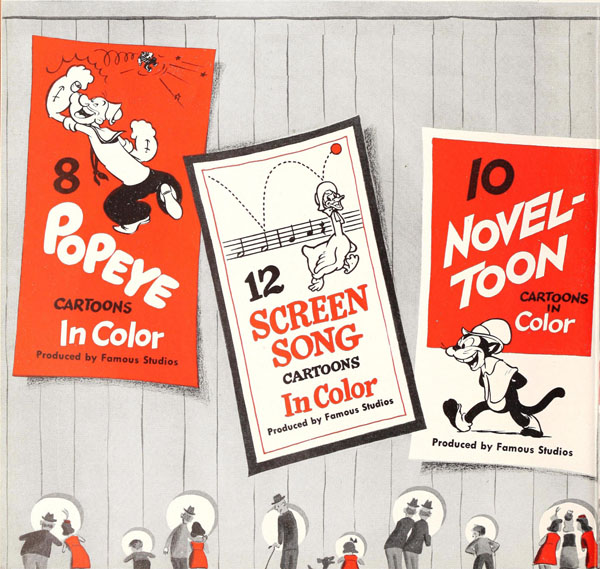
For the 1949-50 season, Paramount gave Famous Studios a repeat of its previous year’s order of 30 cartoons: Eight Popeye, twelve Screen Songs and ten Noveltoons.
Strolling Thru The Park
The Big Drip
Snow Foolin’
Blue Hawaii
Detouring Through Maine
Shortenin’ Bread
Win, Place Or Showboat
Jimgle Jangle Jungle
Heap Hep Injuns
Gobs Of Fun
Helter Swelter
Boos In The Night
Kneitel/Waldman do a nice stylized 1890s spoof and tour the jungle, while Kneitel/Eugster take us to Hawaii, Maine, and explore the summer season.
Sparber/Waldman do Noah’s Ark, take animals ice skating, bring a bake shop to life, and do spot gags with ghosts. Sparber/Eugster do vaudeville on a showboat, and follow a singing animal crew on a tall ship, while Sparber/Johnson explore different tribes of native American Indians.
Leprechaun’s Gold (Paddy)
Song Of The Birds (Audrey)
Land Of Lost Jewels (Red Lantern)
Quack A Doodle Doo (Huey)
Teacher’s Pest (Junior)
Tarts and Flowers (Audrey)
Ups and Downs Derby (Lightning)
Pleased To Eat You (The Hungry Lion)
Goofy Goofy Gander (Audrey)
Saved By The Bell (Herman)
The final Leprechaun romp, another Land of the Lost adventure and the first Baby Huey. Three Little Audrey cartoons, a Herman solo and a trio of tryouts – “Junior” a little owl who is wiser than he looks, “Lightning”, a race horse who’d rather sleep than run, and “The Hungry Lion”, who’s name says it all.
Popeye
Barking Don’t Don’t Fite
The Fly’s Last Flight
How Green Is My Spinach
Gym Jam
Beach Peach
Jitterbug Jive
Popeye Makes A Movie
Kneitel/Sparber and Tytla keep Popeye in present day settings this season. Plots were again reworked, remade or inspired by previous cartoons such as Proteck The Weakerist and Flies Ain’t Human and as usual, one cartoon was a cheater – Popeye Makes A Movie reusing much footage from Popeye Meets Ali Baba’s Forty Theives (1937). That said, Jitterbug Jive is a lively hoot and How Green Is My Spinach has an unforgettable live action insert (with Tom Ewell!).
Trade Ads
In lieu of a second “star” character, studio played up its musical shorts in a big way. I’ve always enjoyed looking at this black-and-white still (below) of the original Paramount Screen Songs title card in my archive. The design and lettering is gorgeous.But by 1950, even they had realized they were overdoing it. (click trade ads below to enlarge)



1949 Trade Reports
There was some good news in the trades. Motion Picture Herald recognized Paramount’s Screen Songs as one of its “Topliner Shorts” series of the year. Fame magazine had Popeye in its Top 5. Boxoffice magazine has Popeye tied with Tom & Jerry for the number 2 slot. Showman’s Trade Review had the Popeye shorts up there at number 5. Click thumbnails below to read these reports:
Casper
Though Casper was missing from the 1949-50 schedule, he wasn’t forgotten. Big plans would emerge for next season. Below left, the original drawing by Joe Oriolo for the proposed Casper story book from the early 1940s. Below center, story man Isadore Klein recalls Casper’s arrival at Famous Studios (from an issue of the New York Screen Cartoonists union newsletter, The Pegboard). Below right, St. John publishes the first issue of a Casper, The Friendly Ghost comic book in September 1949. Click to enlarge.
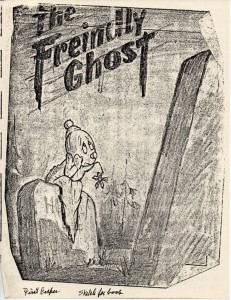
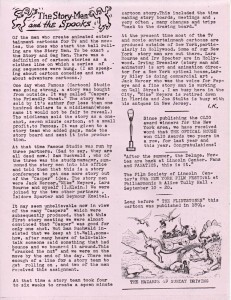

To Be Continued Next Week…
(Thanks To Don Yowp and Ken Layton)



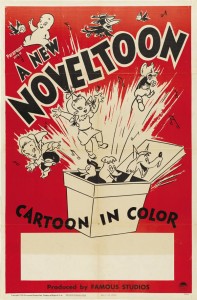



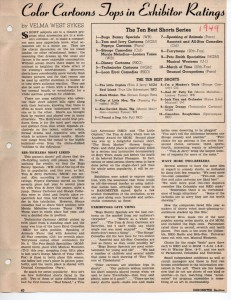
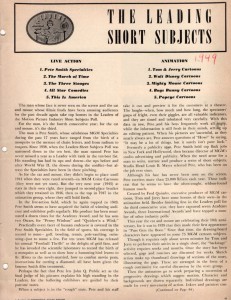

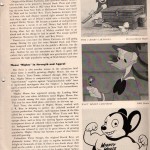
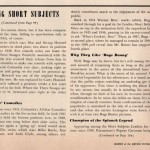
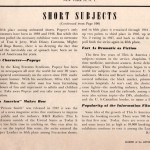
 Jerry Beck is a writer, animation producer, college professor and author of more than 15 books on animation history. He is a former studio exec with Nickelodeon Movies and Disney, and has written for The Hollywood Reporter and Variety. He has curated cartoons for DVD and Blu-ray compilations and has lent his expertise to dozens of bonus documentaries and audio commentaries on such. Beck is currently on the faculty of CalArts in Valencia, UCLA in Westwood and Woodbury University in Burbank – teaching animation history. More about Jerry Beck [
Jerry Beck is a writer, animation producer, college professor and author of more than 15 books on animation history. He is a former studio exec with Nickelodeon Movies and Disney, and has written for The Hollywood Reporter and Variety. He has curated cartoons for DVD and Blu-ray compilations and has lent his expertise to dozens of bonus documentaries and audio commentaries on such. Beck is currently on the faculty of CalArts in Valencia, UCLA in Westwood and Woodbury University in Burbank – teaching animation history. More about Jerry Beck [



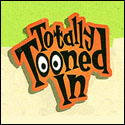



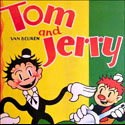
Song of the Birds starring Little Audrey was a remake of the Fleischer’s masterpiece Color Classic cartoon of the same name.
Other remakes of the Fleischer Bros cartoon were…
• Barking Dogs Don’t Fite (sic) (Protekt the Weakerest (in which the original dog which was a Pekinese was replaced by a poodle in the remake)
• The Fly’s Last Flight (Remake of Flies Ain’t Human)
Also note the reporter reading about the “Spinach Shortage” in How Green is My Spinach looks similar to Clark Kent from Superman.
Those 2 Popeye cartoons were remade again in the late 1970’s, by Hanna-Barbera, as “Popeye’s Poodle Problem” and “Popeye and the Pest”.
I have long preferred Little Audrey to Little Lulu because I think Audrey’s cuter. To me, the fact that Paramount wasn’t able to renew the license for Lulu was no great loss. (I’ll bet “Audrey just laughed and laughed!”)
“Jingle Jangle Jungle” stands out among the 1949-50 crop of Screen Songs because they actually used a (relatively) new song — 1947’s “Civilization” from the Andrews Sisters and Danny Kaye. Which in most cases is what the Fleischer’s original Screen Songs attempted to do — give the audiences contemporary music to go along with the spot-gag animation. Famous’ revival for the most part tried to do the songs on the cheap, opting for public domain efforts that were even by the late 1940s between 30 and 50 years old, where no royalty payments were required.
Overall, we’re now into the stagnation period for Famous’ story lines. Combined with the stiffing up of the timing on the animation led to the dull period of the early 50s. “How Green Was My Spinach” was one of the few exceptions, in that it offers up a story line that — after 17 years of Popeye beating the bejeezus out of Bluto — comes across as perfectly natural and outside of the normal Popeye-Olive-Bluto formula Famous was becoming locked into (and the cartoon’s memorable enough so that some early internet listings marked it as a Fleischer cartoon, under the perception that Famous couldn’t do something this original).
Notice in How Green Was My Spinach that Bluto was creating a poisonous formula to eradicate the world’s spinach crop by using the pesticide DDT (Drop Dead Twice) – which was later banned from use in real life due to the fact (DDT) was destroying the ecosystem.
And the deadly mixture produces a mushroom cloud – an image that was still fresh in American minds.
The live-action bit (though shot in B&W) was effective, with the kid finding the can of spinach he just happened to have, and tossing it to “Uncle Popeye.” I don’t think the kid was supposed to be one of his nephews…
I think the only other Popeye cartoon that had live-action footage was “The Adventures of Popeye.” (Were there more?)
There’s definitely the live-action footage of printing presses at the beginning of Popeye’s debut cartoon. I don’t know whether the live-action hands in “Goonland”, “Cartoons Ain’t Human”, and “Shape Ahoy” “count” as live-action footage. Ditto the photo of Groucho that comes to life in “Popeye Meets William Tell”.
I’d love to learn about the economics of these various series. What were their individual budgets, etc.
Interesting…
“Jack Mercer … is working on Wall Street.”
What year was that New York Screen Cartoonists union newsletter published? Was a Wall Street gig a side job for Mercer? Or was there a stretch in his career where he wasn’t employed in either voice-over work or writing?
We need to have a Screen Songs Blu-ray pronto.
One could theorize that “Jitterbug Jive” is a precursor of sorts to Jack Kinney’s “Coffee House” ten years later.
What a shame we couldn’t get a new cartoon as Olive and Bluto fall prey to each passing musical genre (“Sock -a – Delic”,”Popeye’s Slipped Disco”,” Popeye’s New Wave of Destruction”, “Popeye Gets Heavily Mental”, ” Hip Hop Flop”, “Techno No-No”…and so forth).
Hanna-Barbera did give us “Spinach Fever” in 1978. They even reused the slipping-on-ice cubes bit from “Morning, Noon and Nightclub”.
One of the H-B Popeyes from the ’70s had the characters going to the “Slipped Disco.”
Don’t forget Popeye,Olive and Bluto’s parody of opera (Shakespearian Spinach) with Pinto Colvig as the voice of Bluto and a (in my opinion) strangely bizarre mish mosh of the operas The Mikado and Madam Butterfly with Brutus taking over for Bluto and Olive Oyl singing (rather badly but I think they did it on purpose) opera and Popeye singing in the end “Yuk yuk yuk yuk Yokohama”.
Also Hanna Barbera had a Western parody with Olive Oyl as the Saloon Hall singer who sung so badly that even the Bluto Boys who came to town to terrorize the townsfolk but winds up trying to stop Olive’s agonizing caterwauling in a classic running gag that included the Bluto Boys (while getting ready for a showdown with Sheriff Popeye) sealing up the hole in the wall where Olive was singing off key and saying “That’s Entertainment?!?”
I’ve always wondered which one of the Famous animators it was who was given to drawing the Popeye characters without a white around their eyes. Just a solid black circle. You see those drawings, with decreasing frequency, through the 1940s.
I think there was more than one Fleischer/Famous animator that did that with the eyes. It happens in Popeye cartoons done by different units, and it also happens in the Little Lulu series. (The only Famous cartoon I’ve seen outside the Popeye and Little Lulu series in which this happens with the eyes is the worm at the end of “The Old Shell Game”.) It’s mostly gone from the Popeye series by the end of 1954 (except for a brief shot of Olive in “Hillbilling and Cooing”), but it turns up again in some of Kneitel’s TV Popeyes, usually with Olive.
I notice that The Cilly Goose is listed for 1949-50 re-release as a Paramount Champion. My print has the Paramount Champion titles, so now I know when it was re-released!
Now if I could get more information about those Paramount Pacemakers, there is very little on the internet about them. I know Patsy Kelly (formerly from Hal Roach Studios) did one about babies.